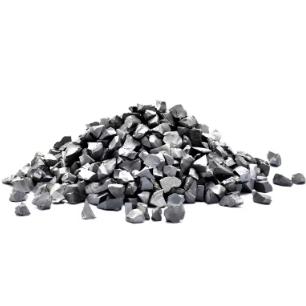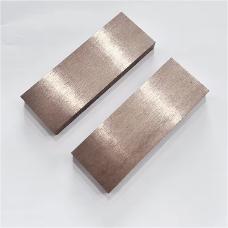**Wireless Charging Woes: When Your Phone Case Has a Metal Plate**
(Can I Use Wireless Charger With Metal Plate In Case?)
That sleek metal plate glued to your phone case? It looks great, feels sturdy, maybe even lets your phone stick magnetically to your car mount. But when you plop your phone down on its fancy wireless charging pad… nothing happens. No satisfying buzz, no battery icon lighting up. Just silence. Frustrating, right? This is a super common headache. Let’s dive into why metal and wireless chargers often don’t play nice and what you can actually do about it.
**1. What Happens When Metal Meets Wireless Charging?**
Wireless chargers work using magnets. Specifically, they use magnetic fields. Inside the charging pad is a coil of wire. When you plug it in, electricity flows through this coil, creating an invisible magnetic field around it. Your phone also has a coil inside. When you place the phone correctly on the pad, this magnetic field from the charger induces (creates) an electrical current in your phone’s coil. This current then charges your phone’s battery. It’s like magic, but it’s just physics!
Now, enter the metal plate. Metal is great at interacting with magnetic fields. Too great, in fact. When that metal plate sits between the charger’s coil and your phone’s coil, it disrupts this delicate magnetic dance. The metal acts like a shield, absorbing or reflecting the magnetic energy instead of letting it pass through smoothly to your phone’s coil. It’s like trying to have a conversation through a thick metal wall – the message just doesn’t get through properly. The result? Your phone doesn’t get the power it needs, or the charger might even get confused and shut down entirely for safety. Sometimes you might get a very weak, slow charge, but often, it’s a complete no-go.
**2. Why Metal Plates Mess Up Wireless Charging**
So, we know metal blocks the magnetic field. But why does it do this? It boils down to two main reasons: eddy currents and magnetic shielding.
First, **eddy currents**. When a changing magnetic field (like the one pulsing from your wireless charger) meets a conductor (like your metal plate), it induces swirling electrical currents *within* that metal. These swirling currents, called eddy currents, generate their own heat. This heat is wasted energy. Instead of the magnetic energy going to charge your phone, it’s being converted into useless heat within the metal plate. Your phone gets leftovers, if anything.
Second, **magnetic shielding**. Certain types of metal, especially ferromagnetic ones like iron or steel (which many plates are made of), are really good at attracting and redirecting magnetic fields. Think of a magnet sticking to your fridge. These metals pull the charger’s magnetic field lines towards themselves, bending them away from your phone’s internal coil. It creates a sort of magnetic shadow where your phone sits. No magnetic field reaching the phone’s coil means no electricity generated, meaning no charge.
Essentially, the metal plate steals the energy meant for your phone, turning it into heat or diverting it away. It’s not that the charger is broken or your phone is faulty; it’s the metal acting as an unwanted middleman, messing everything up.
**3. How to Potentially Make Wireless Charging Work (Despite the Metal)**
Okay, metal plates are trouble. But sometimes, you really need that plate – maybe for your magnetic car mount. Is all hope lost? Not necessarily. There are a few tricks you can try to get wireless charging working, or at least improve the situation. It’s about managing the distance and the type of metal.
The biggest factor is **distance**. Wireless charging relies on close proximity. The magnetic field strength drops off rapidly the farther you get from the coil. If you can increase the distance between the metal plate and the charging coils, you might lessen the interference. How? Try using a slightly thicker phone case over your existing case-with-plate. This adds a buffer. Alternatively, look for a phone case designed specifically with a recessed slot or pocket for the metal plate. This positions the plate further away from the phone’s back, creating more space between it and the internal charging coil. Every millimeter counts!
Next, consider the **type of metal**. Not all metals are equally disruptive. Ferromagnetic metals (iron, steel, nickel) are the worst offenders because they strongly attract magnetic fields. Non-ferromagnetic metals like aluminum are less problematic, but they can still cause issues due to eddy currents. Some plates are made from special alloys or are very thin, which *might* reduce interference. However, don’t expect miracles. Even aluminum can block charging.
Finally, **charger power** matters. A standard Qi charger operates at 5W. If the metal interference is minor, a more powerful 10W, 15W, or even higher charger *might* push enough energy through to get a trickle charge going, though it will likely be slow and inefficient. It’s not a guaranteed fix, but a stronger charger has a better chance than a weak one. Remember, heat generation in the metal plate can still be a problem even with higher power.
**4. Common Applications: Where You’ll Find These Metal Plates**
You might be wondering, “Why would anyone put metal on their phone case if it causes charging problems?” Well, these metal plates serve some really useful purposes, which is why they’re so popular despite the wireless charging hiccup.
The number one reason is **magnetic car mounts**. These mounts have a strong magnet built into the holder. You stick a thin metal plate (often adhesive) onto your phone case or inside it. Then, you just slap your phone onto the car mount, and the magnet holds it securely. It’s super convenient, especially compared to fiddly clamps or suction cups. Many people love this setup for navigation and hands-free use while driving.
Beyond cars, magnetic plates enable **magnetic wallets and grips**. Some phone cases come with built-in slots for cards, and a metal plate might be part of the structure. Others allow you to attach magnetic rings or grips (like PopSockets or similar) that use a small metal plate for adhesion. These grips make holding your phone easier, especially larger models.
Sometimes, the metal is purely **decorative or structural**. A metal plate might be part of the case’s design, adding a premium look or extra rigidity for protection. It might be a logo, a kickstand base, or just an aesthetic accent. While not intentionally placed for function like the car mount plates, it still causes the same charging issue.
So, while wireless charging is a fantastic convenience, these metal plates offer their own conveniences – primarily the ease of magnetic mounting. It’s a trade-off many are willing to make, or at least try to work around.
**5. FAQs: Wireless Charging with Metal Plates**
Let’s tackle some of the most frequent questions people have about this tricky situation.
**Q: Will *any* wireless charger work with a metal plate?**
A: Honestly, it’s unlikely. Standard Qi wireless chargers rely on magnetic induction, which metal disrupts. While stronger chargers *might* work slightly better sometimes, don’t count on consistent charging. It’s fundamentally a physics problem.
**Q: Are there special “metal-friendly” wireless chargers?**
A: Not really, in the way you might hope. Standard Qi technology struggles with metal interference. There are alternative technologies, like radio frequency (RF) charging, which *might* work better through materials, but these are not mainstream for phones yet. Stick to known Qi chargers and manage the metal plate instead.
**Q: Can I just remove the plate when I want to charge wirelessly?**
A: Yes! This is often the simplest solution. If your plate is stuck on with adhesive, peeling it off might damage your case or leave residue. If the plate is embedded in a slot within a case, you can usually pop it out easily when you get home and want to use your wireless charger. Just remember to put it back before your next drive!
**Q: What about super thin metal plates? Do they work?**
A: Thinner plates cause less interference than thick ones, but they still cause problems. Even a very thin piece of metal can disrupt the magnetic field enough to slow down or stop charging. It might work occasionally, but it won’t be reliable.
**Q: Does the position of the plate matter?**
(Can I Use Wireless Charger With Metal Plate In Case?)
A: Absolutely. Wireless chargers have a specific “sweet spot” where their coil is located, usually in the center. Your phone also has its charging coil in a specific spot (often center or slightly lower). If your metal plate sits directly over *both* coils, interference is maximum. If the plate is off to the side or smaller, it *might* interfere less if you position the phone carefully so the coils align away from the metal. But it’s hit-or-miss.
Inquiry us
if you want to want to know more, please feel free to contact us.


